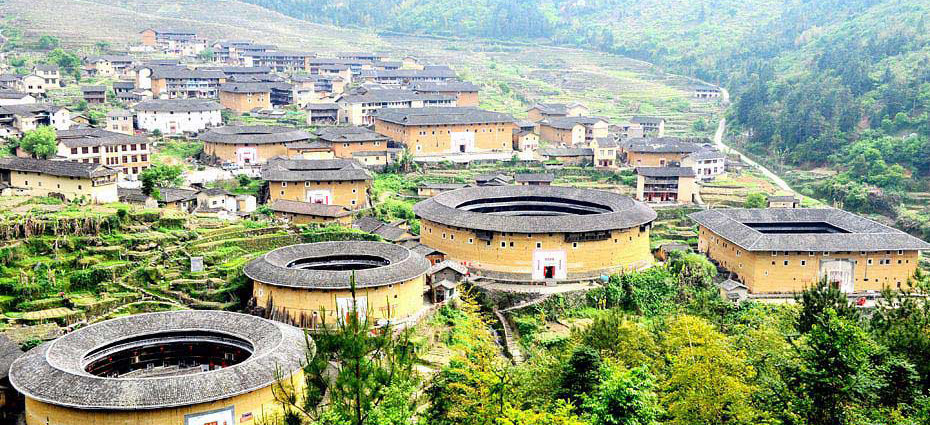Yongding tulou: living fossils

Tulou in Yongding, Fujian Province
In 2008, a total of 46 Fujian tulou sites were included by UNESCO as World Heritage Sites, cited as “exceptional examples of a building tradition and function exemplifying a particular type of communal living and defensive organization in a harmonious relationship with their environment.” Tulou, or earth buildings, are a unique type of residential building built on the mountains of west Fujian Province.
Yongding County of Longyan City, home to many Hakka families, has the largest number of tulou in Fujian Province. Yongding tulou originated during the Song and Yuan dynasties and matured in the late Ming and Qing dynasties. Since the Republican period, tulou has prospered and presented a magnificent piece of China’s cultural heritage.
According to data from the local statistics department, there are more than 20 thousand earth buildings in Yongding, scattered across every village there, and 360 of them have a round shape. 80 percent of these buildings each cover an area of over 500 square meters with more than three storeys. Most of the buildings are still inhabited.
Based on the Oriental philosophical concept of “unity of man and nature,” most tulou, small or large, are spread among mountains and waters like pearls, conforming to the mountain landscape or following the streams of rivers. They have a rough, simple architectural style, yet they are exquisite and peculiar in shape. Thus, they have become a living fossil for ancient Chinese architecture.
Having been to almost all the tulou in Yongding, Zhang Youzhou, a researcher on the Hakka ethnic minority in Fujian and Taiwan from Longyan University, said one of the major characteristics and functions of Fujian tulou is serving as settlements for Hakka people. In one tulou, there are often more than a dozen or even dozens of households living in dozens or hundreds of rooms. All facilities are available within tulou, including halls, bedrooms, wells, granaries, toilets, stalls and kitchens. Therefore, a world is in practice contained in a single tulou.
Most of the existing tulou in Yongding were built in the Ming and Qing dynasties. Zhang said that at that time, Hakka people were financially capable of building increasingly bigger tulou, because western Fujian developed rapidly and agriculture, particularly rice agriculture, reached a historic high. Other industries and businesses, like paper-making, mineral, tobacco planting, and processing industries as well as trade all greatly increased people’s income.
